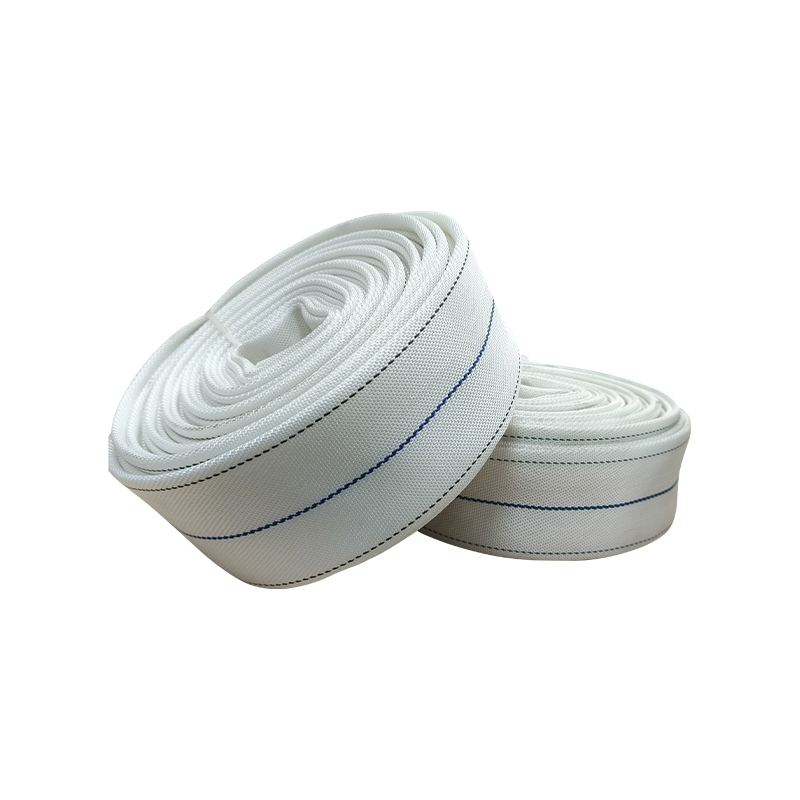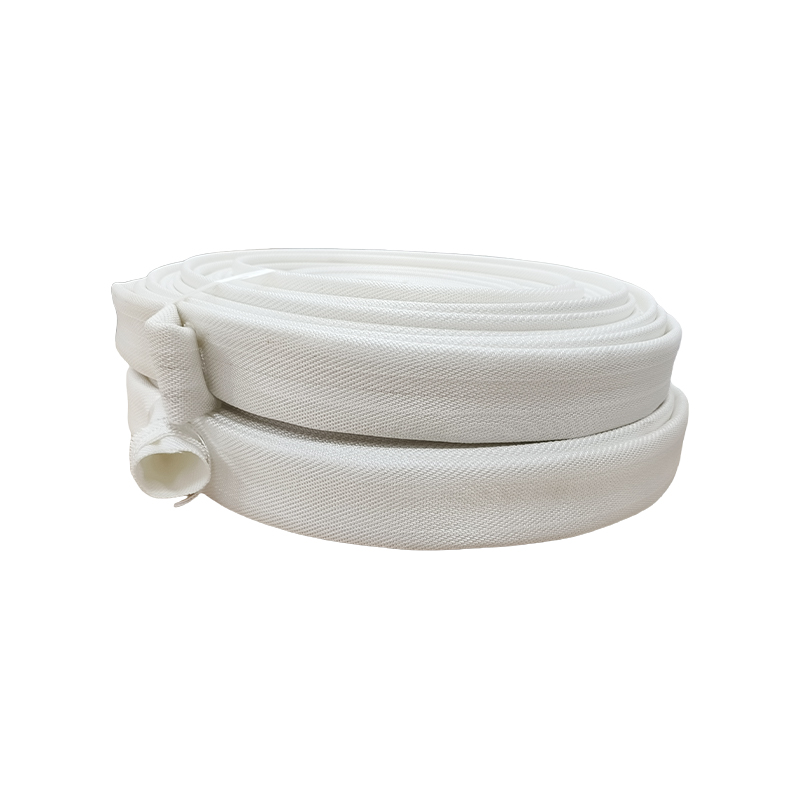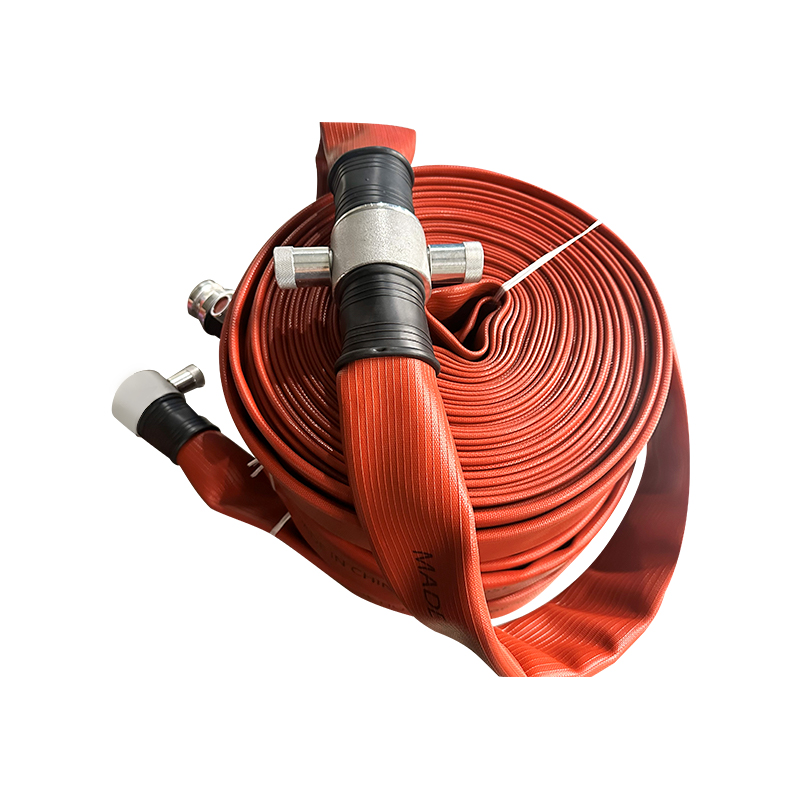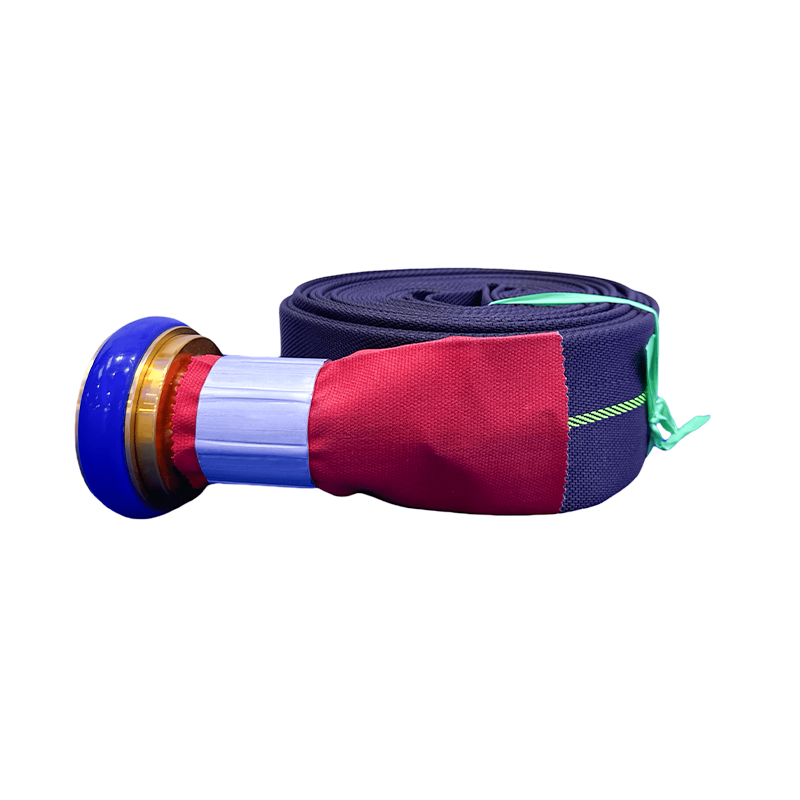- 1 Understanding Fiber Canvas Fire Extinguishing Flat Hoses
- 2 Best practices for maintaining flat fire hoses
- 3 Fiber canvas vs rubber fire hose durability
- 4 How to choose the right diameter for fire hoses
- 5 Installation tips for fire extinguishing flat hoses
- 6 Benefits of using lightweight fire hoses in emergencies
Understanding Fiber Canvas Fire Extinguishing Flat Hoses
Fiber canvas fire extinguishing flat hoses represent a significant advancement in fire safety technology. These specialized hoses combine durability with flexibility, making them ideal for various fire suppression scenarios. Unlike traditional rubber hoses, the fiber canvas construction offers several advantages that we'll explore throughout this article.
EPDM Lined Hose Fiber Canvas Fire Extinguishing Flat Hose
What Makes Fiber Canvas Hoses Unique
The fiber canvas fire hose material composition gives these products their distinctive characteristics. The interwoven fibers create a strong yet flexible structure that can withstand high water pressure while remaining lightweight. This unique combination of properties makes them particularly suitable for:
- Industrial fire protection systems
- Emergency response vehicles
- Building standpipe systems
- Marine fire suppression
- Forestry firefighting operations
Best practices for maintaining flat fire hoses
Proper maintenance is crucial for ensuring the longevity and reliability of your fiber canvas fire extinguishing flat hoses. These maintenance routines should be performed regularly to guarantee optimal performance when needed most.
Cleaning and Storage Procedures
After each use, hoses should be thoroughly cleaned to remove debris and contaminants. The cleaning process involves:
- Flushing with clean water to remove surface particles
- Using mild detergents for stubborn stains
- Inspecting for any signs of damage during cleaning
- Hanging to dry completely before storage
Inspection Schedule
Regular inspections can identify potential issues before they become serious problems. The following table shows the recommended inspection frequency:
| Inspection Type | Frequency | Key Checkpoints |
|---|---|---|
| Visual Inspection | Monthly | Surface wear, discoloration, deformities |
| Pressure Test | Annually | Leaks, weak points, connection integrity |
| Full System Check | Quarterly | Compatibility with other components |
Fiber canvas vs rubber fire hose durability
When comparing fiber canvas to traditional rubber hoses, several key differences emerge in terms of durability and performance characteristics.
Material Properties Comparison
The fundamental difference lies in the material composition. Fiber canvas hoses utilize advanced synthetic fibers woven into a durable matrix, while rubber hoses rely on vulcanized rubber compounds. This difference leads to distinct performance profiles:
| Characteristic | Fiber Canvas Hose | Rubber Hose |
|---|---|---|
| Weight | Lighter (easier to maneuver) | Heavier (more cumbersome) |
| Flexibility | Maintains flexibility in cold | Becomes stiff in low temps |
| Abrasion Resistance | Excellent | Good |
| Chemical Resistance | Superior against many chemicals | Varies by rubber compound |
How to choose the right diameter for fire hoses
Selecting the appropriate hose diameter is critical for effective fire suppression. The diameter affects both water flow rate and pressure, which directly impacts firefighting effectiveness.
Diameter Selection Criteria
Several factors influence the optimal diameter choice:
- Available water pressure from the source
- Required flow rate for the protected area
- Distance water needs to travel
- Type of fire risk (Class A, B, C, etc.)
- Mobility requirements for the hose
Common Diameter Applications
The table below outlines typical applications for various hose diameters:
| Diameter (inches) | Flow Rate Range | Common Applications |
|---|---|---|
| 1.5 | 60-125 GPM | Residential, small commercial |
| 2.5 | 250-300 GPM | Commercial buildings, industrial |
| 3.0 | 300-500 GPM | Industrial, municipal |
| 4.0+ | 500+ GPM | Large industrial, airport crash trucks |
Installation tips for fire extinguishing flat hoses
Proper installation ensures optimal performance and longevity of your fiber canvas fire extinguishing flat hoses. These professional techniques will help you achieve reliable system operation.
Preparation Steps
Before beginning installation, complete these preparatory tasks:
- Inspect all components for damage
- Verify compatibility between hose and fittings
- Clear the installation path of sharp objects
- Ensure proper tools are available
- Review system design specifications
Connection Techniques
Proper connection methods vary slightly depending on the coupling type, but generally follow these principles:
- Always use manufacturer-recommended gaskets
- Tighten connections to specified torque values
- Use thread sealant where appropriate
- Never force mismatched threads
- Check for leaks after pressurization
Benefits of using lightweight fire hoses in emergencies
The reduced weight of fiber canvas hoses provides significant advantages during emergency response situations where speed and maneuverability are critical.
Operational Advantages
Lightweight hoses enable firefighters and safety personnel to:
- Deploy equipment more quickly
- Navigate tight spaces more easily
- Reduce physical fatigue during extended operations
- Carry additional equipment due to weight savings
- Respond more effectively in multi-story buildings
Safety Improvements
The weight reduction also enhances safety in several ways:
- Lower risk of musculoskeletal injuries
- Reduced trip hazards from easier handling
- Faster evacuation if needed
- Improved control during high-pressure operation
- Better visibility without bulky hose configurations


 en
en
 عربى
عربى









